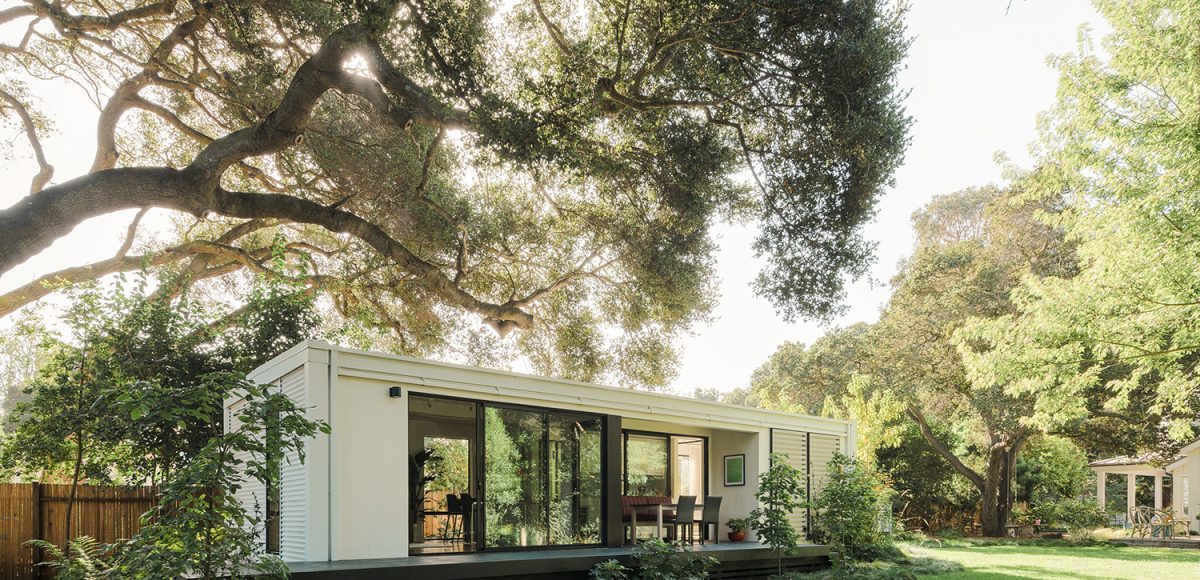The Beverly Hills Planning Commission reviewed the city’s standards for accessory dwelling units, or ADUs, at its March 10 meeting. While the Commission did not make any binding decisions, the discussion brings the city one step closer toward an overhaul of the city’s rules and regulations around the ADUs As Sacramento has sought solutions to the ongoing housing crisis in the Golden State, it has turned its sights on adding density through the development of ADUs.
Also known as “second units,” “granny flats,” or “mother-in-law units,” ADUs are habitable structures separate from primary living quarters. Unlike guest houses, ADUs must have a kitchen.
The last time the city updated its ADU regulations was in 2017 to bring the city into compliance with new state laws. But the state has made even more changes to ADU policy since then, meaning that the city must again update its standards to conform with the state.
The Beverly Hills City Council most recently adopted a new comprehensive plan for growth that includes incentivizing the creation of ADUs. That plan, known as the Housing Element, calls on the city to consider greater flexibility in the standards regulating ADUs and create pre-approved blueprints for ADUs.
In Beverly Hills, ADUs are either by-right or discretionary. By-right developments fit certain standards and can receive a building permit without a review. By-right ADUs can be built a maximum of 4 feet from the side and rear property lines; they cannot be taller than 16 feet. A by-right detached ADU can be at most 850 square feet for a one bedroom and 1,000 square feet for two or more bedrooms. Additional parking is not required if the property is located within half a mile of public transit.
The city’s discretionary process is meant for properties north of Santa Monica Boulevard and allows for larger ADUs. City staff explained that the discretionary process enables more flexibility given the larger lot sizes in the area. Commission Vice Chair Thomas Hudnut suggested creating by-right standards for north of Santa Monica to reduce the workload on staff and facilitate faster approvals.
While the city can institute rules that are more permissive than the state, it cannot be any less permissive. As such, the Planning Commission considered whether or not the city should simply comply with state law or go further.
The commission considered changes to regulations for ADUs on single-family zoned properties, saving discussion on ADUs in multi-family zoning for a subsequent meeting. No decisions were made on March 10, but city staff will use the commission’s comments in drafting an ordinance to present to the commission at a later date.
The commissioners expressed widespread support for incentivizing the construction of ADUs. While they generally agreed that the city’s existing standards on height were too restrictive, most felt that the 850 and 1,000 square feet limits were sufficient.
Commissioner Myra Demeter said that the existing housing market was “prohibitive for young people returning home from college or adult children, as well as a elderly parents.” She hoped that the adoption of more flexible regulations would create a friendlier housing environment for younger and older residents.
A 16-foot height limit made it difficult, if not impossible, to construct an ADU on top of a garage, let alone a two-story ADU, said Director of Community Development Ryan Gohlich. A two-story structure would require a minimum of 18 feet, he said. If an ADU included certain architectural details, such as Spanish-style roofing, that would bring it closer to 20 to 22 feet–a range that appealed to most commissioners.
Commissioners raised the question of whether or not ADUs are counted as taxable structures. While Gohlich said that the Los Angeles County Assessor’s office determines property taxes, “if taxes were to be required as part of an ADU, I believe those would be combined with property taxes for the property as a whole.” He believed that the added square footage would trigger a reassessment of property taxes.
The City of Los Angeles currently offers pre-approved ADU plans for residents – a program that Beverly Hills is looking to replicate. LA homeowners must pay a fee in order to assess whether selected plans work on their property.
According to city staff, Beverly Hills could choose to waive fees, but the city would have to cover the cost of reviewing the proposals. Most commissioners opposed waiving the fees, though Commissioner Peter Ostroff suggested placing a cap on how much architects could charge for their pre-approved plans.
City staff will hold a community workshop to discuss ADUs and solicit feedback before bringing a draft ordinance before the commission at a later date.







